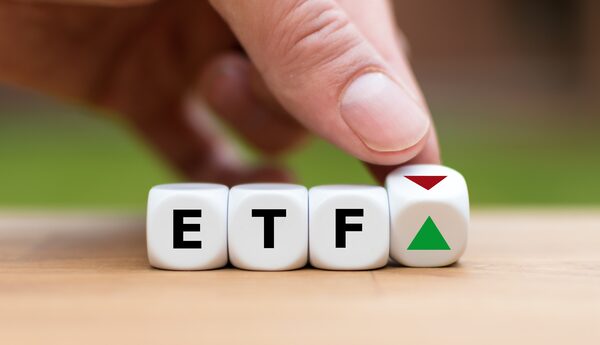
Those choosing to sell an ETF as a tax-loss trade only to buy one in the same asset class should be wary.Frank Harms/iStockPhoto / Getty Images
The market turmoil that defined 2020 makes this December ideal for tax-loss trading using exchange-traded funds, experts say, though investors need to be aware of the risks.
Selling underperforming funds for a loss allows investors to offset taxes on their capital gains. It’s also an opportunity for investors to optimize their portfolio not just from a taxation perspective, but also for asset allocation.
This year, for example, some money managers recommend selling beaten-down U.S. banking and Canadian energy ETFs and buying global real estate funds. American banks have been lagging the overall recovery, they say, while internationally focused real estate funds are expected to benefit dramatically from any sustained post-pandemic market rebound.
Those choosing to sell an ETF as a tax-loss trade only to buy one in the same asset class, meanwhile, should be wary.
“When cycling from one ETF into another ETF, it becomes particularly important to be careful about what index that ETF tracks,” says Daniel Straus, director of ETF research and strategy for National Bank Financial. “If you cycle into an ETF that tracks the same index, [the Canada Revenue Agency] would not allow you to book that as a loss. They’re considered identical securities.”
Mr. Straus offered advice on navigating what he describes as “historic pandemic-induced volatility” this year in a recent report on tax-loss strategies using ETFs.
“There have been some years where the markets were up across the board so we didn’t even publish a report because there weren’t enough candidates out there to talk about,” Mr. Straus says.
Now, investors have the opposite problem.
“ETFs are the perfect investment vehicle for tax-loss selling [and] this year is as good as any because we have a very strong recovery, but it has been very uneven,” says Alfred Lee, a portfolio manager with BMO Asset Management. “Some sectors have been hit harder than others.”
Energy is one sector that has lagged the overall recovery and both Mr. Lee and Mr. Straus say funds tracking the Canadian energy space in particular are ripe for a tax-loss trade.
For investors who want to maintain their exposure to the sector, Mr. Straus recommends selling the iShares S&P/TSX Capped Energy Index ETF (XEG-T) and buying BMO Equal Weight Oil & Gas Index ETF (ZEO-T).
“[XEG and ZEO] hold very similar group of companies, but because they are weighted differently in the mind of [the CRA] they are considered different securities,” he says.
XEG has declined by about 35 per cent this year (as of Dec. 7), versus a 26-per-cent drop for ZEO.
Of course, getting out of one fund and moving into a similar fund is “only one way to think about tax-loss selling” using ETFs, says David Wysocki, vice president of national sales for Harvest Portfolios.
Tax-loss selling is a good time to “look under the hood and ask yourself what do you really own?” he says. “And is now a time to be looking to upgrade your portfolios and maybe get rid of something that hasn’t performed?”
Mr. Wysocki recommends selling Canadian energy funds such as XEG as well as funds that track the U.S. banking sector, such BMO Equal Weight U.S. Banks Index ETF (ZBK-T), down more than 10 per cent this year. BMO’s Mr. Lee agrees American banks “have kind of lagged the market,” citing the RBC U.S. Banks Yield Index ETF (RUBY-T) as a potential candidate for a tax-loss trade.
In terms of what to buy with the proceeds from all those Canadian energy and U.S. banking fund sales, Mr. Wysocki recommends ETFs composed of real estate investment trusts (REITs) – specifically globally focused REIT funds over Canadian options.
“This is more from a fundamentals perspective, but we do see opportunity in the global REIT space,” he says. “There are a number of Canada-focused REITs in the ETF space where you could probably crystallize some losses and get more diversified exposure with a globally-focused fund.
While Canadian REITs tend to have significant exposure to the hard-hit retail sector, Mr. Wysocki says they offer “virtually no exposure” to more specialized real estate assets such as data centres.
Industrial real estate assets are also under-represented in Canadian REIT funds, he says, while specialized and industrial real estate make up a much larger proportion of globally-focused REIT ETFs.
REITs are “potentially a good area where you want to stay reinvested,” says BMO’s Mr. Lee. “I think a lot of this vaccine news is potentially good for a lot of these real estate funds.”
The iShares S&P/TSX Capped REIT Index ETF (XRE-T) and the iShares Global Real Estate Index ETF (CGR-T) are both down by about 10 per cent year-to-date.
The last day for tax-loss selling is Dec. 29, to ensure trades are settled before year-end, though Mr. Straus at National Bank says investors considering a move from individual equities into ETFs should consider acting sooner.
“The ETF industry loves tax-loss trading because they see people sell their stocks, they see volume in sectors and ETFs that had been performing poorly through the year start to increase in the November and December months,” he says. “Then they only see a little bit of selling within those categories in January, but not as much as there was buying earlier. Some of those assets tend to be sticky [and] that kind of trading improves the asset gathering of the ETF ecosystems.”